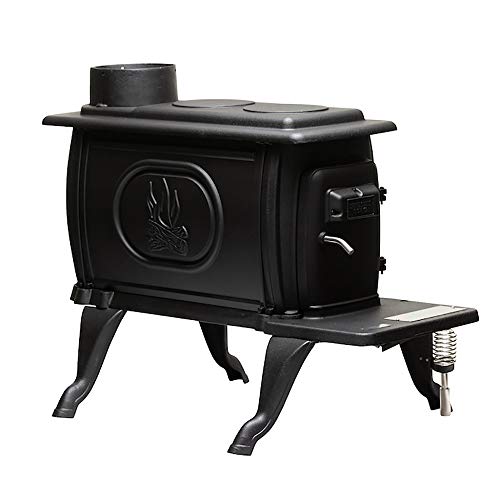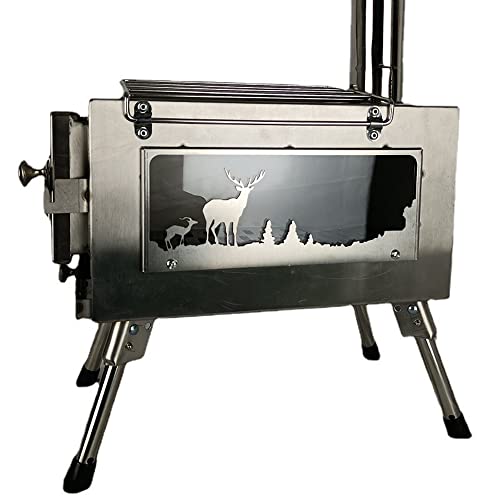The Most Significant Issue With Shed Wood Burner, And How You Can Repa…
페이지 정보

본문
 Shed Wood Burner - Safety Considerations
Shed Wood Burner - Safety ConsiderationsInstalling a stove in a shed wood Burning stove, a log cabin, or a different off grid home is a fantastic idea. There are some things to consider prior to doing so.
To decrease the cost of fuel and heat loss, it's essential that your shed or cabin be properly insulate it. Insulation also reduces dampness and improve fire safety.
Size
A shed log burner is an ideal way to add heat to an outdoor space or summer home. It is important to select the correct stove and make sure it is safe and meets all standards. A stove that is too large isn't able to vent properly and will also quickly make the flue smear. A stove that is too large will not be able heat the room sufficiently.
It is important to first determine the size of the shed, and then determine the best small wood burning stoves location for the stove. Once you've decided where the stove will be positioned, you'll need to build a hearth to support it. The hearth should be at minimum 12mm thick and constructed of a non-combustible substance. The safe distance between a single wall flue pipe and any combustible material is 3x its diameter however, this distance can be reduced by using an insulative panel as shielding.
After you've built the hearth, then put in the stove. You may need an stove pipe, a door, or a damper, depending on what you choose. You'll also need to install carbon monoxide detectors in your shed or cabin because these areas are smaller than homes and can be filled with CO gas that is dangerous very quickly.
If you're installing a stove in the shed, you'll need to install an air liner to ensure safety and to stop condensation. Flue liners are available at most hardware stores, and they're usually easy to cut to the correct length. Use tin snips to remove the bottom and lid of the can. Make sure you bend any sharp corners within.
Safety
Shed wood burning stoves are effective and comfortable, but they should be installed with care. This includes making sure you are using the correct installation and use of the stove, as well as a carbon monoxide detector as well as a fire extinguishers. To reduce the risk of a mishap it is essential to keep pets and children away from the stove.
It is recommended to hire an HETAS certified installer to install your shed stove. They can make sure that the installation is done in compliance with the building regulations. This includes relevant distances from walls that are combustible. This can save you from the need for an official building control certificate.
You must ensure that you are burning well-seasoned, kiln-dried, seasoned wood in your stove in your shed. Don't try to burn treated off-cuts, because this can result in the release of chemicals in the flue gases which could pollute the air and lower the quality of air. It is also important to ensure that you have a correctly sized chimney. In most sheds, a single wall flue will suffice but if the shed will be using a double wall stove, you will require a larger chimney.
 Smoke from a wood-burning stove can be dangerous, particularly to children, pregnant women and the elderly. It is also dangerous for people suffering from asthma, COPD or heart diseases and can also affect cats and dogs too.
Smoke from a wood-burning stove can be dangerous, particularly to children, pregnant women and the elderly. It is also dangerous for people suffering from asthma, COPD or heart diseases and can also affect cats and dogs too.It is crucial to use a fire guard screen to safeguard children and pets from hot coals and sparks. A book of fire logs should be kept close in case of emergency. It is also recommended to avoid using charcoal or gasoline starter fluid close to the stove in your shed. These are highly flammable and could cause an explosion or flare-up should you make a mistake.
You could be living in a smoke-control region. This will impact the type of stove you can install. You'll need to select the type of stove that is part of the defra stove (External link) approved list of appliances.
Installation
A log burner in your summer house or shed is a great idea. It can help you get closer to the nature, and is more appealing than a traditional fire in your home. A log burner in your shed or garden can be a fantastic place to gather with family and socialising. It also lets you to enjoy the great outdoors from the comfort of your home.
When you are installing a portable wood burning stoves burner in a shed it is important to consider the dimensions of your summerhouse or shed and the output you require from the stove in order to adequately heat it. It is also important to be aware of whether you are located in a zone of smoke control and if there are any local laws that could affect your installation. It is recommended that you consult with an HETAS certified installer to assist you with your planning and installation.
You'll need to know the size of the flue pipe that your shed will be able to support before installing a shed wood stove. The supplier of your stove should be able to give you some tips on this. Once you have figured out the size of flue pipe you'll require and you are able to look at shed log burners that are suitable for your summer house.
After you have decided on the right stove for your shed or summerhouse You will need to prepare the area for installation. This involves removing any materials that could ignite and ensuring that there is at least 1m from the shed to the front edge of the chimney stack. It is also crucial to ensure that the stove is placed at least 2m from the nearest walls that are combustible and that all combustible materials inside the shed is covered with fire board or covered with insulation.
The hearth must be constructed of non-combustible materials and at least 12mm thick. You can make use of any type of concrete or stone for instance, but you must be careful not use sand, as this could affect the performance of your stove and lead to a fault in the chimney. You'll also need two twin wall flue pipes, a class D air vent and chimney cowl.
Maintenance
Shed wood burners can be safely used when there is sufficient ventilation and a smoke detector installed. If you are planning to install a wood burner in your shed, make sure that the electrical installation is signed off by an electrician and that any flammable material is kept away from the stove.
Clean the chimney and glass of your shed log heater regularly. You can use a light squirt of vinegar to remove any marks or smudges that have accumulated on the inside of the stove glass. But be careful not to get any vinegar inside the burner. You can also clean the outside of the glass log burner with a mild solution made of water and paper towels.
Keep in mind that shed log burners are designed to be used with dry-seasoned firewood. The logs' moisture content should be below 20%. The most effective method of determining the moisture level of your logs is to use a wood moisture meter. Keep your wood in a ventilated shed, and make sure to keep combustible items like curtains and furniture away from the shed. It's also recommended to have the chimney swept at least once per year.
- 이전글This Is The History Of Mesothelioma Asbestos Claims 25.01.11
- 다음글14 Smart Strategies To Spend Left-Over Electric Wall Mounted Fires Budget 25.01.11
댓글목록
등록된 댓글이 없습니다.

